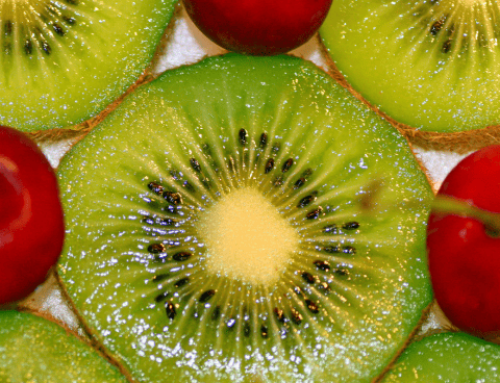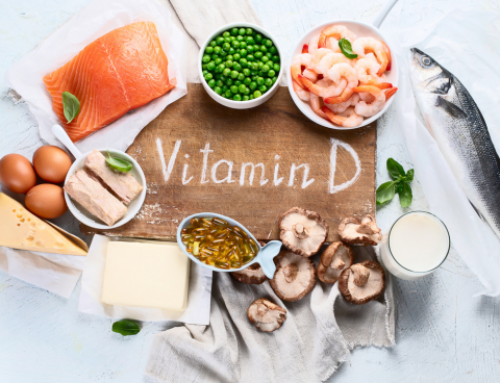Pre-Game Nutrition: What to Eat Before You Compete
Many athletes are told to “eat well” the day before and the day of a competition. But few athletes are told how to “eat well.” What’s worse, teams may get together for a pasta dinner the night before a game, which ends up as an excuse to load up on other poor food choices like cookies and processed foods. Fueling yourself properly isn’t difficult, but many athletes have no idea how to go about it. Here’s a crash course in how to fuel up the right way.
Too many typical high school and college athletes eat a standard American diet of sugary drinks, highly processed foods, lots of carbohydrates and poor sources of fat. You don’t need to be a nutrition expert to know that this is a poorly formulated diet. I’m interested in helping you reach your highest level of performance. To do that, you need to make some serious changes.
To understand why fueling right is important, you need to know where your energy comes from and how you access that energy. Depending on your muscle mass, you may store between 200 and 500g of glycogen in your muscles, and another 100g in your liver. Humans burn about 1.2g of glucose per minute of strenuous exercise, so assuming your glycogen levels are at or near full, you should have tons of energy available for an extended period.
RELATED: Pre-Game Meal Recommendations
For your body to access the glycogen inside your muscles and liver, your insulin levels need to be low. Adrenaline also assists with mobilization of energy stores, but in order for you to be sensitive to adrenaline and get a large release of adrenaline (which is good prior to competition), your insulin levels need to be low.
This is important because the introduction of carbohydrates (such as by drinking sugary drinks or loading up on pasta) induces the release of insulin, and high insulin levels prevent you from accessing the glycogen in your body. This is most pronounced when marathon runners “hit the wall” and completely run out of energy. Their glycogen stores are inaccessible due to the ingestion of various gels or drinks, so the only energy they’re able to use comes from ingesting those carbohydrates, which run out quickly and take too long to absorb.
Now that you understand that your insulin levels must be kept at a baseline to allow your body to perform maximally, you need to know how to keep insulin at bay. Any usable carbohydrate load (not fiber) of more than 10 grams causes a release of insulin, as do large portions of protein (numbers vary on this, but 40g or more per sitting will probably do it.) Fat does not cause a release of insulin.
RELATED: 9 Easy and Portable Pre-Game Snacks for Athletes
Based on the above, your diet throughout the day of a competition should consist of good sources of fat (olive oil, avocado, animal fats, nuts); a moderate protein load (high-quality beef or pork is best); and very low carbohydrate intake (bread, cereals, rice, pasta, potatoes, beans.) An insulin release can last 3 to 6 hours, depending on the source and load, so if you have a football game at 7:00 p.m. and eat pancakes for breakfast, it’s not the worst thing in the world. Just make sure you have no carbohydrates after about 2:00 p.m. You also need to drink plenty of water and add an electrolyte tablet or solution if your athletic trainer has a supply of them.
The plan is different for long distance runners, who typically carry much less muscle mass than other athletes. Since they tend to blow through carbohydrate stores relatively quickly during their training sessions, they are also more likely to eat more carbohydrates. An interesting aspect of long distance running is that several studies have shown eating a high-fat, low carbohydrate, moderate protein ketogenic diet may be beneficial for distance runners. If that type of lifestyle is not for you as a distance runner, the same important points hold true. Save your carbohydrates for after the race to get the maximum benefit of energy stores your body has for you.
If you “need” carbs right before training, something is wrong with your diet and it needs to be addressed. It’s amazing how a simple change can make someone understand that feeling hungry two hours after eating or “hitting the wall” during long training bouts are not normal occurrences. Performance nutrition should be regarded as just as important as your training regimen. All you need to do is understand how your body works, and everything else will fall into place.
Check out the video player above for more tips on what to eat and drink before you work out.
[cf]skyword_tracking_tag[/cf]RECOMMENDED FOR YOU
MOST POPULAR
Pre-Game Nutrition: What to Eat Before You Compete
Many athletes are told to “eat well” the day before and the day of a competition. But few athletes are told how to “eat well.” What’s worse, teams may get together for a pasta dinner the night before a game, which ends up as an excuse to load up on other poor food choices like cookies and processed foods. Fueling yourself properly isn’t difficult, but many athletes have no idea how to go about it. Here’s a crash course in how to fuel up the right way.
Too many typical high school and college athletes eat a standard American diet of sugary drinks, highly processed foods, lots of carbohydrates and poor sources of fat. You don’t need to be a nutrition expert to know that this is a poorly formulated diet. I’m interested in helping you reach your highest level of performance. To do that, you need to make some serious changes.
To understand why fueling right is important, you need to know where your energy comes from and how you access that energy. Depending on your muscle mass, you may store between 200 and 500g of glycogen in your muscles, and another 100g in your liver. Humans burn about 1.2g of glucose per minute of strenuous exercise, so assuming your glycogen levels are at or near full, you should have tons of energy available for an extended period.
RELATED: Pre-Game Meal Recommendations
For your body to access the glycogen inside your muscles and liver, your insulin levels need to be low. Adrenaline also assists with mobilization of energy stores, but in order for you to be sensitive to adrenaline and get a large release of adrenaline (which is good prior to competition), your insulin levels need to be low.
This is important because the introduction of carbohydrates (such as by drinking sugary drinks or loading up on pasta) induces the release of insulin, and high insulin levels prevent you from accessing the glycogen in your body. This is most pronounced when marathon runners “hit the wall” and completely run out of energy. Their glycogen stores are inaccessible due to the ingestion of various gels or drinks, so the only energy they’re able to use comes from ingesting those carbohydrates, which run out quickly and take too long to absorb.
Now that you understand that your insulin levels must be kept at a baseline to allow your body to perform maximally, you need to know how to keep insulin at bay. Any usable carbohydrate load (not fiber) of more than 10 grams causes a release of insulin, as do large portions of protein (numbers vary on this, but 40g or more per sitting will probably do it.) Fat does not cause a release of insulin.
RELATED: 9 Easy and Portable Pre-Game Snacks for Athletes
Based on the above, your diet throughout the day of a competition should consist of good sources of fat (olive oil, avocado, animal fats, nuts); a moderate protein load (high-quality beef or pork is best); and very low carbohydrate intake (bread, cereals, rice, pasta, potatoes, beans.) An insulin release can last 3 to 6 hours, depending on the source and load, so if you have a football game at 7:00 p.m. and eat pancakes for breakfast, it’s not the worst thing in the world. Just make sure you have no carbohydrates after about 2:00 p.m. You also need to drink plenty of water and add an electrolyte tablet or solution if your athletic trainer has a supply of them.
The plan is different for long distance runners, who typically carry much less muscle mass than other athletes. Since they tend to blow through carbohydrate stores relatively quickly during their training sessions, they are also more likely to eat more carbohydrates. An interesting aspect of long distance running is that several studies have shown eating a high-fat, low carbohydrate, moderate protein ketogenic diet may be beneficial for distance runners. If that type of lifestyle is not for you as a distance runner, the same important points hold true. Save your carbohydrates for after the race to get the maximum benefit of energy stores your body has for you.
If you “need” carbs right before training, something is wrong with your diet and it needs to be addressed. It’s amazing how a simple change can make someone understand that feeling hungry two hours after eating or “hitting the wall” during long training bouts are not normal occurrences. Performance nutrition should be regarded as just as important as your training regimen. All you need to do is understand how your body works, and everything else will fall into place.
Check out the video player above for more tips on what to eat and drink before you work out.
[cf]skyword_tracking_tag[/cf]










